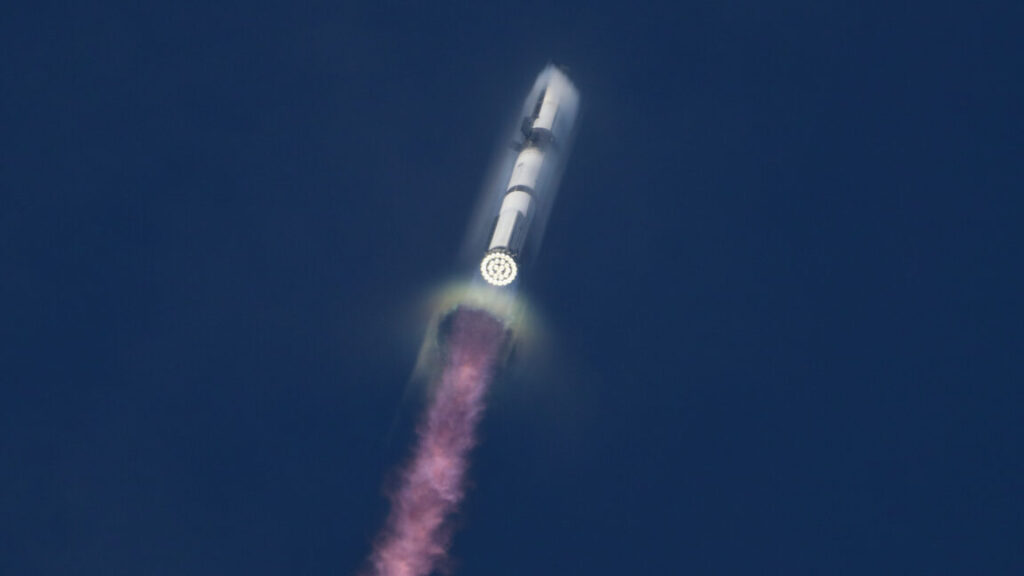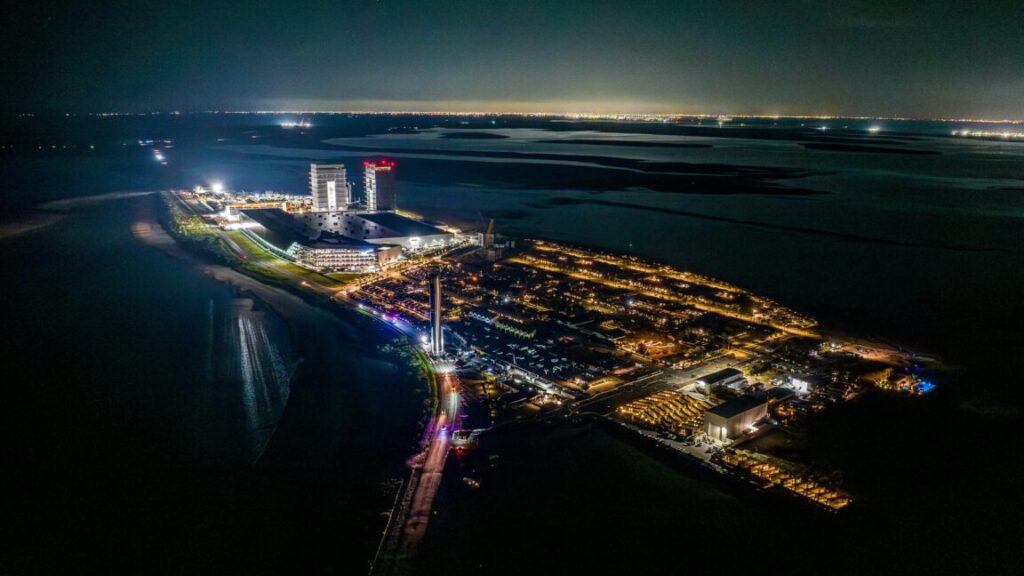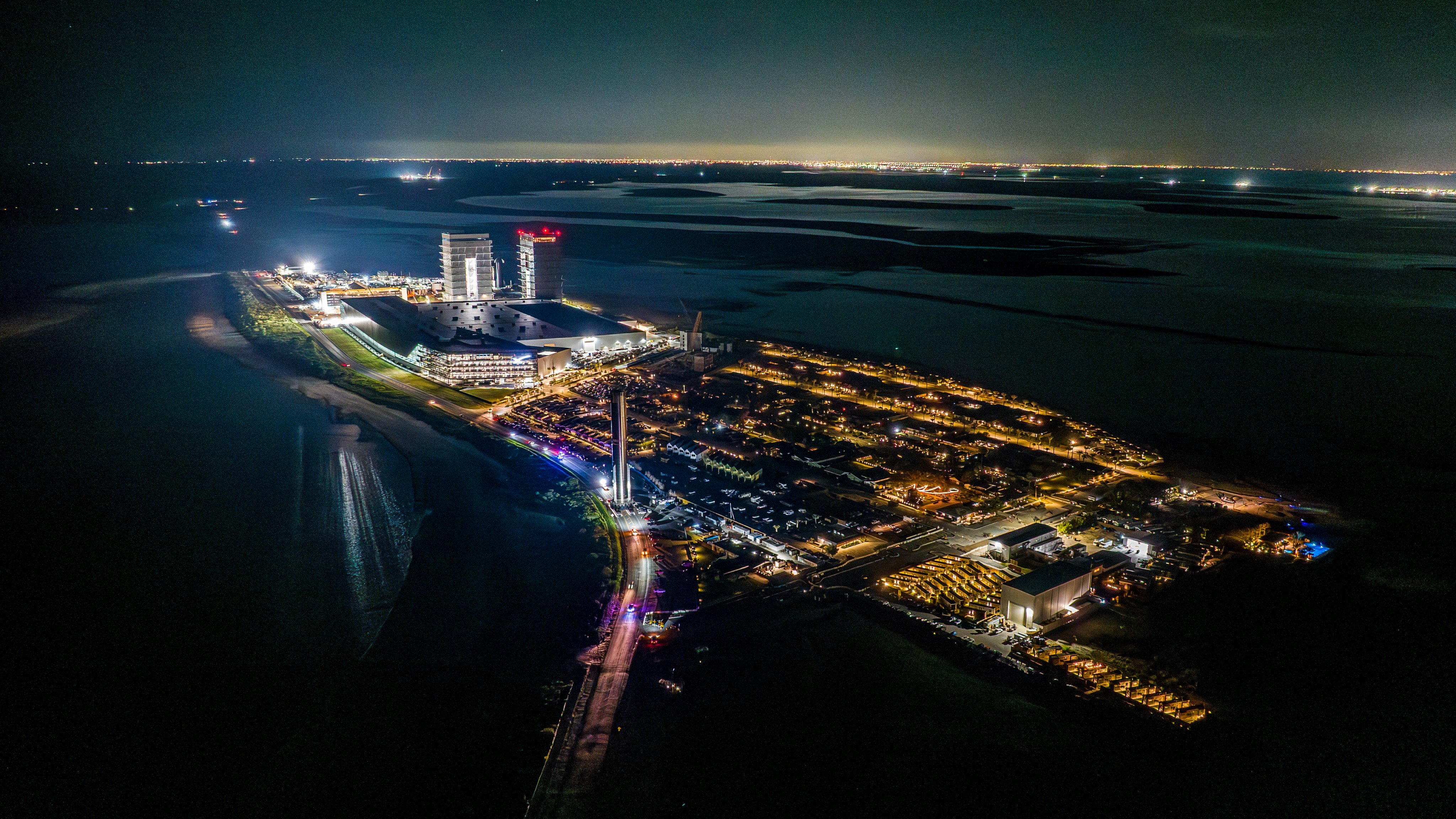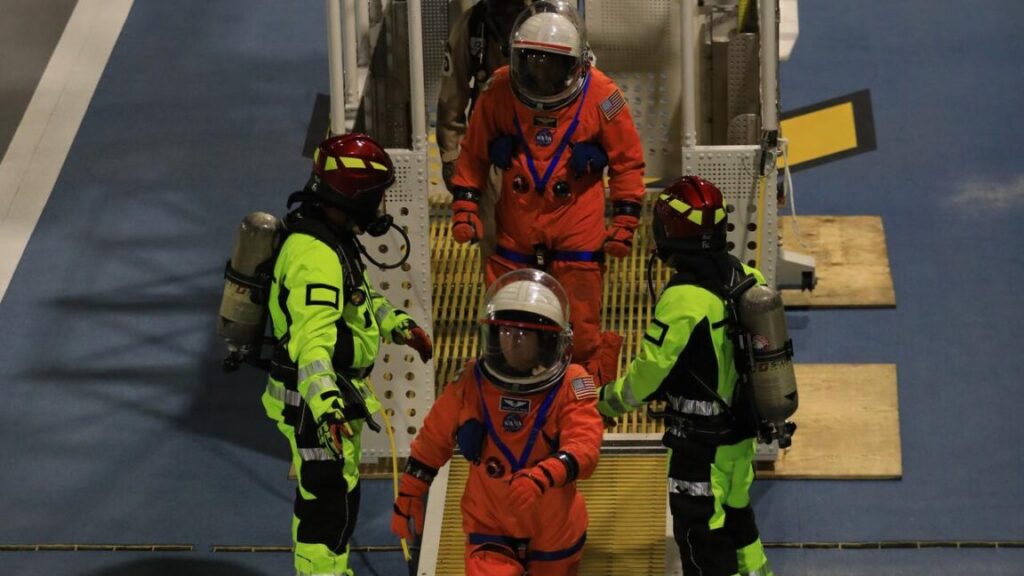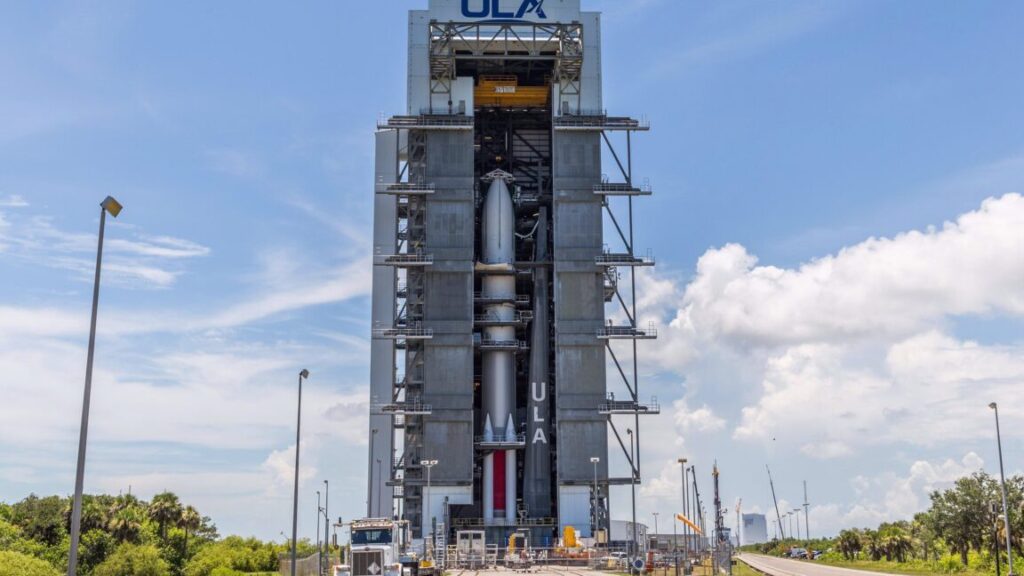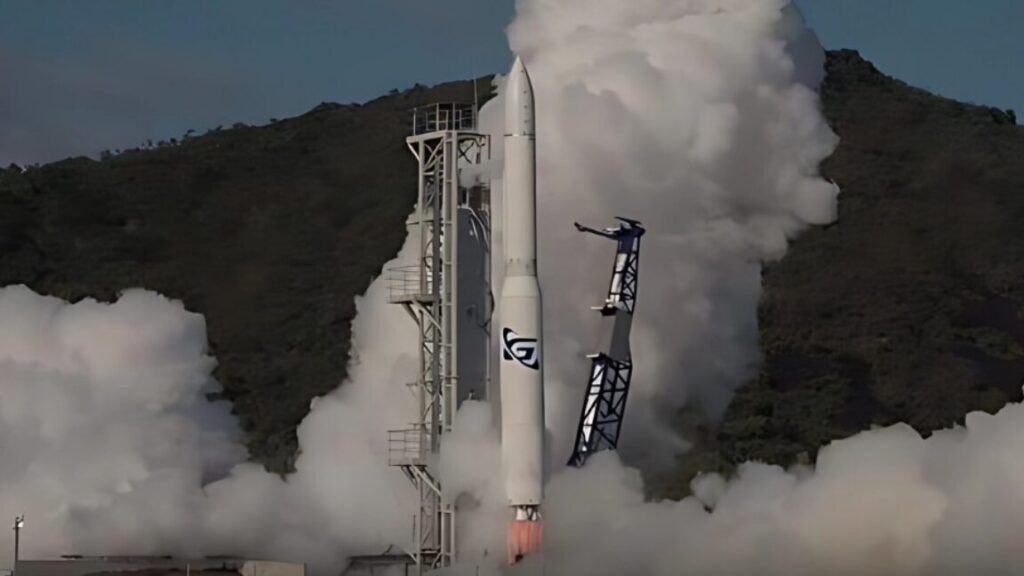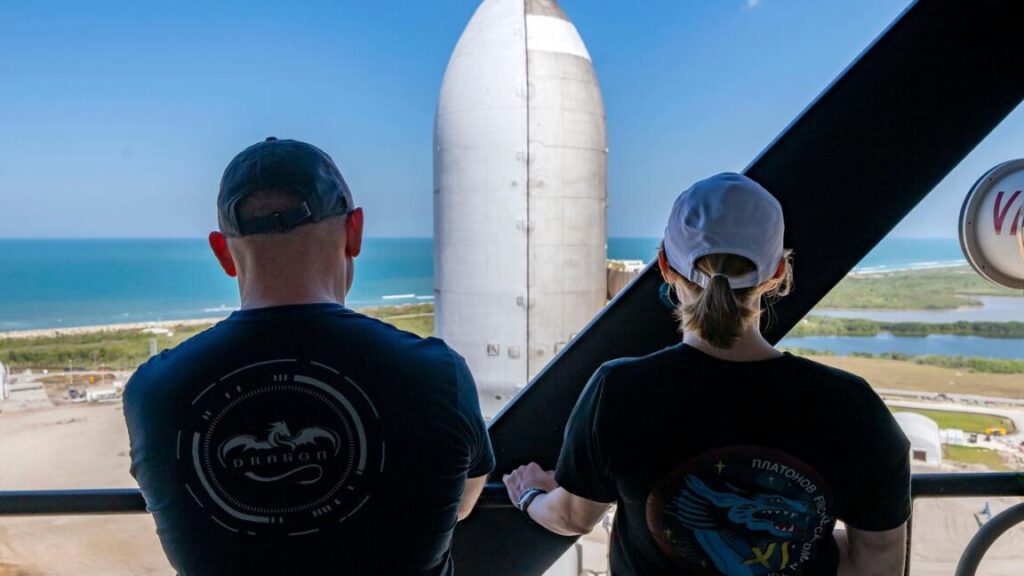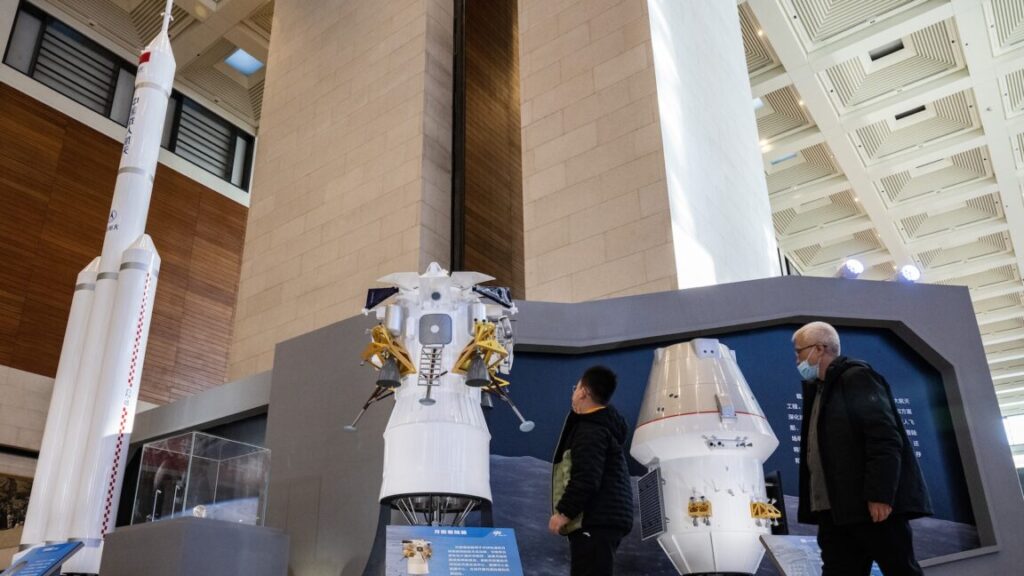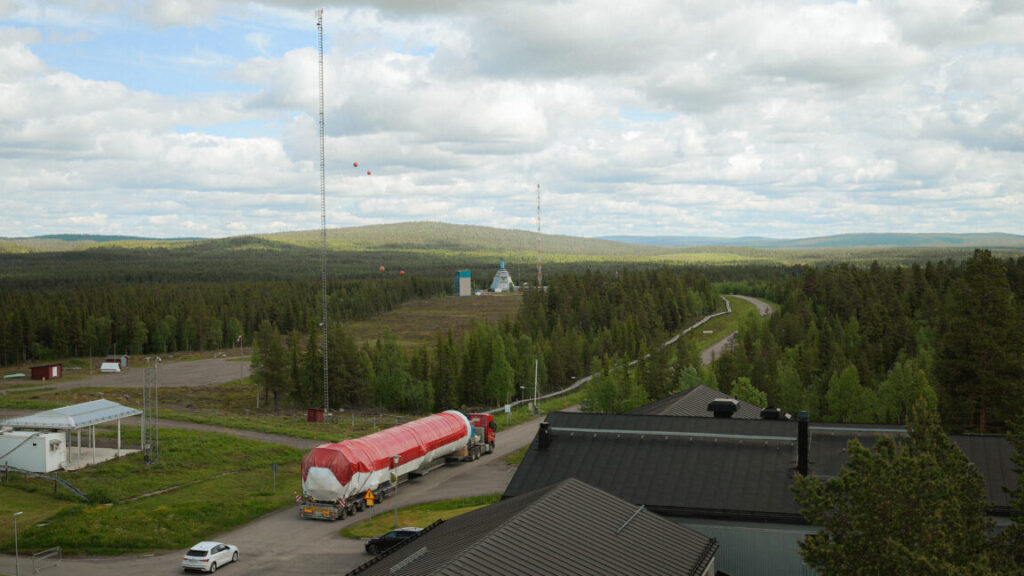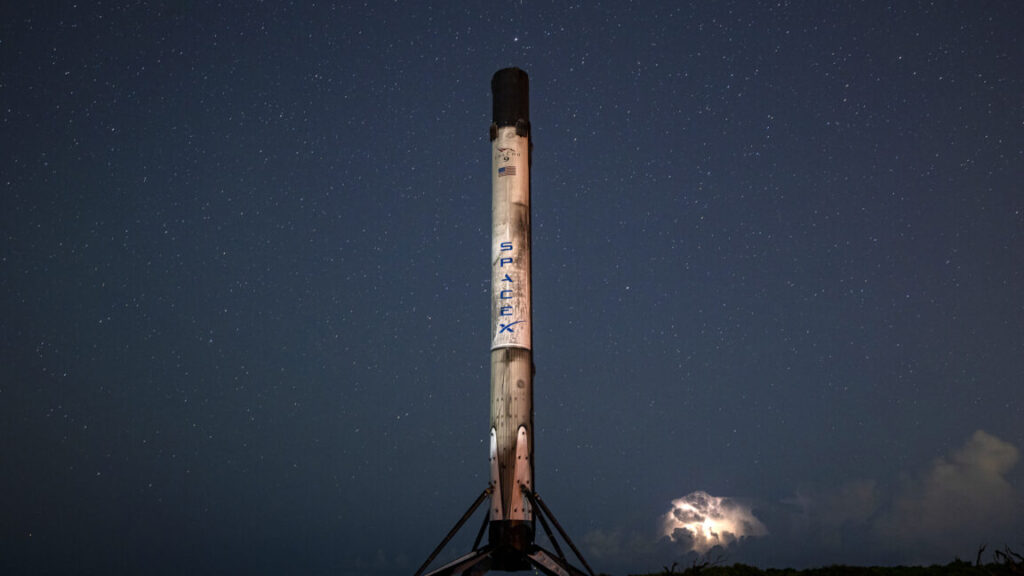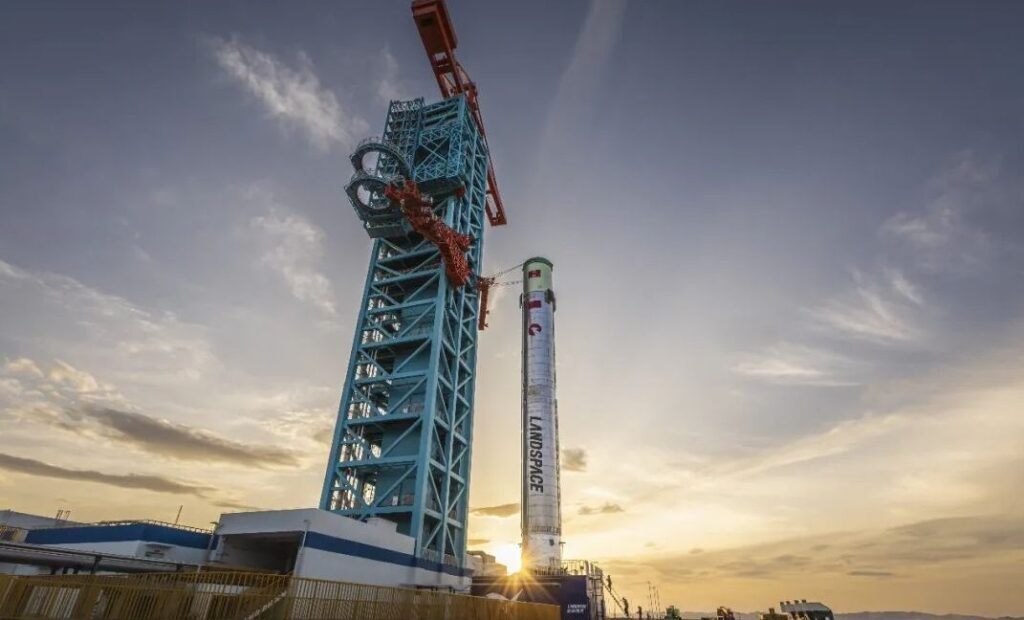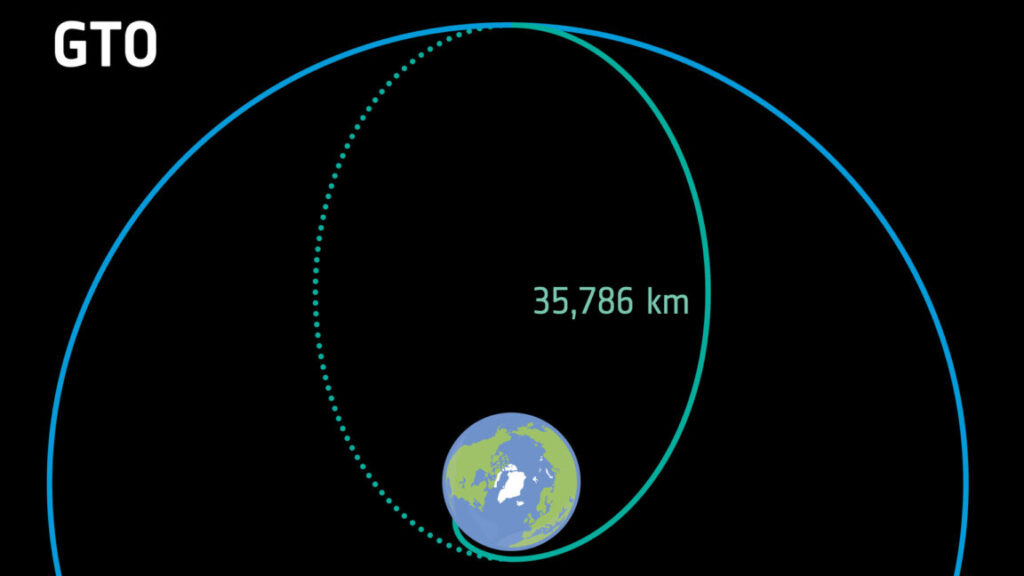Rocket Report: SpaceX achieved daily launch this week; ULA recovers booster
Firefly Aerospace reveals why its Alpha booster exploded after launch in April.
Starship and its Super Heavy booster ascend through a clear sky over Starbase, Texas, on Tuesday evening. A visible vapor cone enveloped the rocket as it passed through maximum aerodynamic pressure and the speed of sound. Credit: Stephen Clark/Ars Technica
Welcome to Edition 8.08 of the Rocket Report! What a week it’s been for SpaceX. The company completed its first successful Starship test flight in nearly a year, and while it wasn’t perfect, it sets up SpaceX for far more ambitious tests ahead. SpaceX’s workhorse rocket, the Falcon 9, launched six times since our last edition of the Rocket Report. Many of these missions were noteworthy in their own right, including the launch of the US military’s X-37B spaceplane, an upgraded Dragon capsule to boost the International Space Station to a higher orbit, and the record 30th launch and landing of a flight-proven Falcon 9 booster. All told, that’s seven SpaceX launches in seven days.
As always, we welcome reader submissions. If you don’t want to miss an issue, please subscribe using the box below (the form will not appear on AMP-enabled versions of the site). Each report will include information on small-, medium-, and heavy-lift rockets, as well as a quick look ahead at the next three launches on the calendar.

Firefly announces cause of Alpha launch failure. Firefly Aerospace closed the investigation into the failure of one of its Alpha rockets during an April mission for Lockheed Martin and received clearance from the FAA to resume launches, Payload reports. The loss of the launch vehicle was a dark cloud hanging over the company’s otherwise successful IPO this month. The sixth flight of Firefly’s Alpha rocket launched in April from Vandenberg Space Force Base, California, and failed when its first stage booster broke apart milliseconds after stage separation. This created a shockwave that destroyed the engine nozzle extension on the second stage, damaging the engine before the second stage ran out of propellant seconds before it attained orbital velocity. Both stages ultimately fell into the Pacific Ocean.
Too much stress … Investigators concluded that “plume induced flow separation” caused the failure. The phenomenon occurs when a rocket’s exhaust disrupts airflow around the vehicle in flight. In this case, Firefly said the rocket was flying at a higher angle of attack than prior missions, which resulted in the flow separation and created intense heat that broke the first stage apart just after it jettisoned from the second stage. Firefly will increase heat shielding on the first stage of the rocket and fly at reduced angles of attack on future missions. Alpha has now launched six times since 2021, with only two complete successes. Firefly said it was working on setting a date for the seventh Alpha launch. (submitted by EllPeaTea)
The easiest way to keep up with Eric Berger’s and Stephen Clark’s reporting on all things space is to sign up for our newsletter. We’ll collect their stories and deliver them straight to your inbox.
ESA books a ticket on European launchers. The European Space Agency has awarded launch service contracts to Avio and Isar Aerospace under its Flight Ticket Initiative, European Spaceflight reports. Announced in October 2023, the Flight Ticket Initiative is a program run jointly by ESA and the European Union that offers subsidized flight opportunities for European companies and organizations seeking to demonstrate new satellite technologies in orbit. The initiative is part of ESA’s strategy to foster the continent’s commercial space industry, offering institutional funding to support satellite and launch companies. Avio won contracts to launch three small European space missions as secondary payloads on Vega C rockets flying into low-Earth orbit. Isar Aerospace will launch two small satellite missions to orbit for European companies.
No other options … Avio and Isar Aerospace were the obvious contenders for the Flight Ticket Initiative from a pool of five European companies eligible for launch awards. The other companies, PLD Space, Orbex, and Rocket Factory Augsburg, haven’t launched their orbital-class rockets yet. Avio, based in Italy, builds the now-operational Vega C rocket, and Germany’s Isar Aerospace launched its first Spectrum rocket earlier this year, but it failed to reach orbit. Avio’s selection replaces Arianespace, which was originally part of the Flight Ticket Initiative. Arianespace was previously responsible for marketing and sales for the Vega rocket, but ESA transferred its Flight Ticket Initiative eligibility to Avio following its split from Arianespace. (submitted by EllPeaTea)
Canadian rocket company ready for launch. NordSpace is preparing to launch its 6-meter tall Taiga rocket from Newfoundland, CBC reports. It will be a suborbital launch, meaning it won’t orbit Earth, but NordSpace says the launch will be the first of a Canadian commercial rocket from a Canadian commercial spaceport. The rocket is powered by a 3D-printed liquid-fueled engine and is a stepping stone to an orbital-class rocket NordSpace is developing called Tundra, scheduled to debut in 2027. The smaller Taiga rocket will launch partially fueled and fire its engine for approximately 60 seconds, according to NordSpace.
Newfoundland to space … The launch site, called the Atlantic Spaceport Complex, is located on the Atlantic coast near the town of St. Lawrence, Newfoundland. It will have two launch pads, one for suborbital flights like Taiga, and another for orbital missions by the Tundra rocket and other launch vehicles from US and European companies. The Taiga launch is scheduled no earlier than Friday morning at 5: 00 am EDT (09: 00 UTC). NordSpace says it is a “fully privately funded and managed initiative crucial for Canada to build a space launch capability that supports our security, economy, and sovereignty.” (submitted by Matthew P)

SpaceX’s reuse idea isn’t so dumb after all. A Falcon 9 rocket launched early Thursday from Kennedy Space Center, Florida, with another batch of Starlink Internet satellites. These types of missions launch multiple times per week, but this flight was special. The first stage of the Falcon 9, designated Booster 1067, launched and landed on drone ship in the Atlantic Ocean, completing its 30th flight to space and back, Ars reports. This is a new record for a reusable orbital-class booster stage and comes less than 24 hours after a preceding SpaceX launch from Florida that marked the 400th Falcon 9 landing on a drone ship since the first offshore recovery in 2016.
30 going for 40 … SpaceX is now aiming for at least 40 launches per Falcon 9 first stage, four times as many flights as the company’s original target for Falcon 9 booster reuse. Many people in the industry were skeptical about SpaceX’s approach to reuse. In the mid-2010s, both the European and Japanese space agencies were looking to develop their next generation of rockets. In both cases, Europe with the Ariane 6 and Japan with the H3, the space agencies opted for traditional, expendable rockets instead of pushing toward reuse. In the United States, the main competitor to SpaceX has historically been United Launch Alliance. Their reaction to SpaceX’s plan to reuse first stages a decade ago was dismissive. ULA dubbed its plan to reuse just the engine section of its Vulcan rocket “Smart Reuse” a few years ago. But ULA hasn’t even attempted to recover the engines from the Vulcan core stage yet, and reuse is still at least several years away.
Russia nears debut of Soyuz-5 rocket. In recent comments to the Russian state-run media service TASS, the chief of Roscosmos said the country’s newest rocket, the Soyuz-5, should take flight for the first time before the end of this year, Ars reports. “Yes, we are planning for December,” said Dmitry Bakanov, the director of Roscosmos, Russia’s main space corporation. “Everything is in place.” According to the report, translated for Ars by Rob Mitchell, the debut launch of Soyuz-5 will mark the first of several demonstration flights, with full operational service not expected to begin until 2028. It will launch from the Baikonur spaceport in Kazakhstan.
Breaking free of Ukraine … From an innovation standpoint, the Soyuz-5 vehicle does not stand out. It has been a decade in the making and is fully expendable, unlike a lot of newer medium-lift rockets coming online in the next several years. However, for Russia, this is an important advancement because it seeks to break some of the country’s dependency on Ukraine for launch technology. The new rocket is also named Irtysh, a river that flows through Russia and Kazakhstan. The rocket has been in development since 2016 and largely repurposes older technology. But for Russia, a key advantage is that it takes rocket elements formerly made in Ukraine and now manufactures them in Russia.
SpaceX launches mission to reboost the ISS. SpaceX completed its 33rd cargo delivery to the International Space Station (ISS) early Monday, when a Dragon supply ship glided to an automated docking with more than 5,000 pounds of scientific experiments and provisions for the lab’s seven-person crew, Ars reports. The resupply flight is part of the normal rotation of cargo and crew missions that keep the space station operating, but this one carries something new. What’s different with this mission is a new rocket pack mounted inside the Dragon spacecraft’s rear trunk section. In the coming weeks, SpaceX and NASA will use this first-of-its-kind propulsion system to begin boosting the altitude of the space station’s orbit.
A rocket on a rocket … SpaceX engineers installed two small Draco rocket engines in the trunk of the Dragon spacecraft. The thrusters have their own dedicated propellant tanks and will operate independently of 16 other Draco thrusters used to maneuver Dragon on its journey to the ISS. When NASA says it’s the right time, SpaceX controllers will command the Draco thrusters to ignite and gently accelerate the massive 450-ton space station. All told, the reboost kit can add about 20 mph, or 9 meters per second, to the space station’s already-dizzying speed. Maintaining the space station’s orbit has previously been the responsibility of Russia.
X-37B rides with SpaceX again. The US military’s reusable winged spaceship rocketed back into orbit from Florida on August 21 atop a SpaceX rocket, kicking off a mission that will, among other things, demonstrate how future spacecraft can navigate without relying on GPS signals, Ars reports. The core of the navigation experiment is what the Space Force calls the “world’s highest performing quantum inertial sensor ever used in space.” The spaceplane also hosts a laser inter-satellite communications demo. This is the eighth flight of the X-37B spaceplane, and the third to launch with SpaceX.
Back to LEO … This mission launched on a Falcon 9 rocket into low-Earth orbit (LEO) a few hundred miles above the Earth. This marks a return to LEO after the previous X-37B mission flew on a Falcon Heavy rocket into a much higher orbit. Many of the spaceplane’s payloads have been classified, but officials typically identify a handful of unclassified experiments flying on each X-37B mission. Past X-37B missions have also deployed small satellites into orbit before returning to Earth for a runway landing at Kennedy Space Center, Florida, or Vandenberg Space Force Base, California.
Rocket Lab cuts the ribbon on Neutron launch pad. Launch Complex 3, the Virginia Spaceport Authority’s Mid-Atlantic Regional Spaceport and home to Rocket Lab’s newest reusable rocket, Neutron, is now complete and celebrated its official opening Thursday, WAVY-TV reports. Officials said Launch Complex 3 is ready to bring the largest orbital launch capacity in the spaceport’s history with Neutron, Rocket Lab’s reusable launch vehicle, a medium-lift vehicle capable of launching 33,000 pounds (15 metric tons) to space for commercial constellations, national security, and interplanetary missions.
Not budging … “We’re trying as hard as we can to get this on the pad by the end of the year and get it away,” said Peter Beck, Rocket Lab’s founder and CEO. Beck is holding to his hope the Neutron rocket will be ready to fly in the next four months, but time is running out to make this a reality. The Neutron rocket will be Rocket Lab’s second orbital-class launch vehicle after the Electron, which can place payloads of several hundred pounds in orbit. Electron has a launch pad in Virginia, too, but most Electron rockets take off from New Zealand.

Starship completes a largely successful test flight. SpaceX launched the 10th test flight of the company’s Starship rocket Tuesday evening, sending the stainless steel spacecraft halfway around the world to an on-target splashdown in the Indian Ocean, Ars reports. The largely successful mission for the world’s largest rocket was an important milestone for SpaceX’s Starship program after months of repeated setbacks, including three disappointing test flights and a powerful explosion on the ground that destroyed the ship that engineers were originally readying for this launch.
Lessons to learn … For the first time, SpaceX engineers received data on the performance of the ship’s upgraded heat shield and control flaps during reentry back into the atmosphere. The three failed Starship test flights to start the year ended before the ship reached reentry. Elon Musk, SpaceX’s founder and CEO, has described developing a durable, reliable heat shield as the most pressing challenge for making Starship a fully and rapidly reusable rocket. But there were lessons to learn from Tuesday’s flight. A large section of the ship transitioned from its original silver color to a rusty hue of orange and brown by the time it reached the Indian Ocean. Officials didn’t immediately address this or say whether it was anticipated.
ULA recovering boosters, too. United Launch Alliance decided to pull four strap-on solid rocket boosters from the Atlantic Ocean after their use on the company’s most recent launch. Photos captured by Florida photographer Jerry Pike showed a solid rocket motor casing on a ship just off the coast of Cape Canaveral. Tory Bruno, ULA’s president and CEO, wrote on X that the booster was one of four flown on the USSF-106 mission earlier this month, which marked the third flight of ULA’s Vulcan rocket and the first with a US national security payload.
A GEM from the sea … The boosters, built by Northrop Grumman, are officially called Graphite Epoxy Motors, or GEMs. They jettison from the Vulcan rocket less than two minutes after liftoff and fall into the ocean. They’re not designed for reuse, but ULA decided to recover this set of four from the Atlantic for inspections. The company also raised from the sea two motors from the previous Vulcan launch last year after one of them suffered a nozzle failure during launch. Bruno wrote on X that “performance and ballistics were spot on” with all four boosters from the more recent USSF-106 mission, but that engineers decided to go ahead and recover them to close out a “nice data set” from inspections of now six recovered motors—two from last year and four this year.
Next three launches
Aug. 30: Falcon 9 | Starlink 17-7 | Vandenberg Space Force Base, California | 03: 09 UTC
Aug. 31: Falcon 9 | Starlink 10-14 | Cape Canaveral Space Force Station, Florida | 11: 15 UTC
Sept. 3: Falcon 9 | Starlink 17-8 | Vandenberg Space Force Base, California | 02: 33 UTC

Rocket Report: SpaceX achieved daily launch this week; ULA recovers booster Read More »
